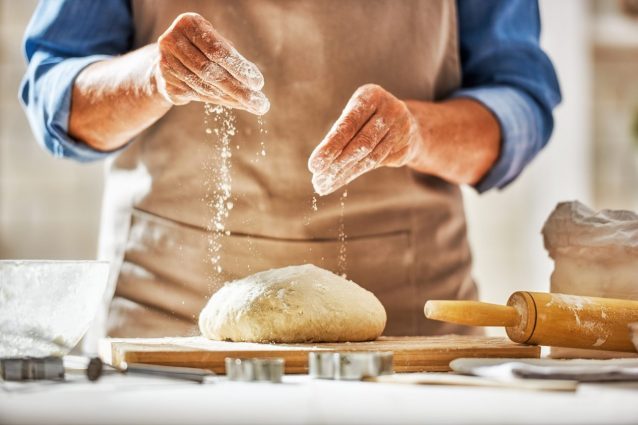10 Lasagna mistakes to avoid
Lasagna is a classic first course of Italian cuisine, now famous all over the world, and it can never be missing on the tables of Sundays spent with the family. Preparing lasagna is not difficult but like all recipes you must be careful just enough not to make some mistakes that could ruin this very tasty first course loved by everyone.
;Resize,width=742;)
Lasagna is a classic first course of Italian cuisine and it can never be missing on the Sunday family table. Preparing lasagna is not difficult but like all recipes you must be careful just enough not to make some mistakes that could ruin this very tasty first course loved by everyone!
1. Let’s carefully choose the pasta for lasagna

Fresh pasta or dry pasta? To obtain a soft and compact lasagna it is preferable to use sheets of fresh egg pasta, and if you do not have time to prepare them at home, you can find them in the supermarket refrigerated counter. In that case, the advice is to blanch each sheet for a minute in salted water; help yourself with a skimmer and once you have blanched them, immerse each sheet in cold water to stop the cooking process. Your sheets will be softer and they will better bake in the oven.
2.How many layers does a lasagna have?
A food must be also beautiful to look at and a tall and compact lasagna satisfies the sight and taste, but how high must the perfect lasagna be? How many layers do you need? There is no precise rule but a good lasagna must have at least 4 layers, even better if 5.
3.For the lasagna, is it better to use a homemade ragù sauce or can I buy it at the supermarket?

One of the secrets for a good lasagna is undoubtedly the ragù sauce; whether it is Bolognese sauce based on minced meat with tomato sauce, white ragù sauce or vegetables ragù sauce, the advice is always to prepare it at home. In supermarkets we find all forms of ready-made sauces or creamy béchamel but if you have a bit of time and a bit of good will, just try and make it by yourself, your lasagna will have a completely different flavor.
4.Compactness and density of the condiment for a lasagna
A good condiment must not be too liquid or too thick; if you prepare the ragù sauce, be careful that it is not too watery, because otherwise it could ruin your lasagna. If you are preparing a white lasagna, cut the vegetables evenly so that the cooking is homogeneous. The compactness of the béchamel sauce is very important for a white lasagna, which must be creamy and without lumps.
5.Distribute the condiment of the lasagna evenly

For a good lasagna, be careful to evenly distribute the condiment. Arrange the ragù sauce or béchamel evenly both in the center and in the corners, in this way the cooking will be uniform and your guests will not fight to grab the most seasoned piece of lasagna!
6.Let the lasagna rest before cooking it
For cooking patience is an excellent ally, so when you have finished composing your lasagna, let it rest for about 40 minutes before baking it; in this way the pasta will absorb all the flavors of the condiment and the cooking will be more homogeneous and the taste richer.
7.For the lasagna, do you have to use parchment paper or not?

Parchment paper is an excellent tool for oven preparations but every rule has its exception; for a good lasagna it is preferable not to use it, you risk it sticking to the first layer of pasta thus ruining your dish. It will certainly be a little more tiring to clean the pan but as a base it is preferable a layer of seasoning well distributed on the bottom of the pan.
8.Butter the baking dish for your lasagna
Before starting to compose the layers of lasagna, butter the bottom of the baking dish and make a first layer of seasoning; in this way you do not risk sticking the bottom of the baking dish to the first layer of lasagna.
9.For your lasagna, do you have to use an aluminium sheet?

Who doesn't love the crispy crust that forms on top of lasagna? The trick is there and it's simpler than you think; cover the lasagna with aluminum foil for the first 30/35 minutes of cooking, in this way the heat of the oven will cook your lasagna evenly. After this time, remove the aluminum foil and cook for another 10/15 minutes; the top will begin to brown and your crust will make the lasagna beautiful to look at and good to eat.
The aluminum foil can be molded and can withstand temperatures ranging from 30 degrees C to 220 degrees C; it is in fact highly recommended for cooking in foil. You can therefore use it safely; the important thing is that it does not come into contact with the flame or with the electric resistances of the oven and it must not be used for storing acidic foods.
10.Wait before cutting your lasagna
When the lasagna is ready it is difficult to resist the temptation to immediately eat it, but be careful because even in this case you have to be a little patient. Wait for your lasagna to rest for about 20 minutes once it is baked, in this way it will not fall apart when cut.
;Resize,width=767;)
;Resize,width=712;)

;Resize,width=712;)
